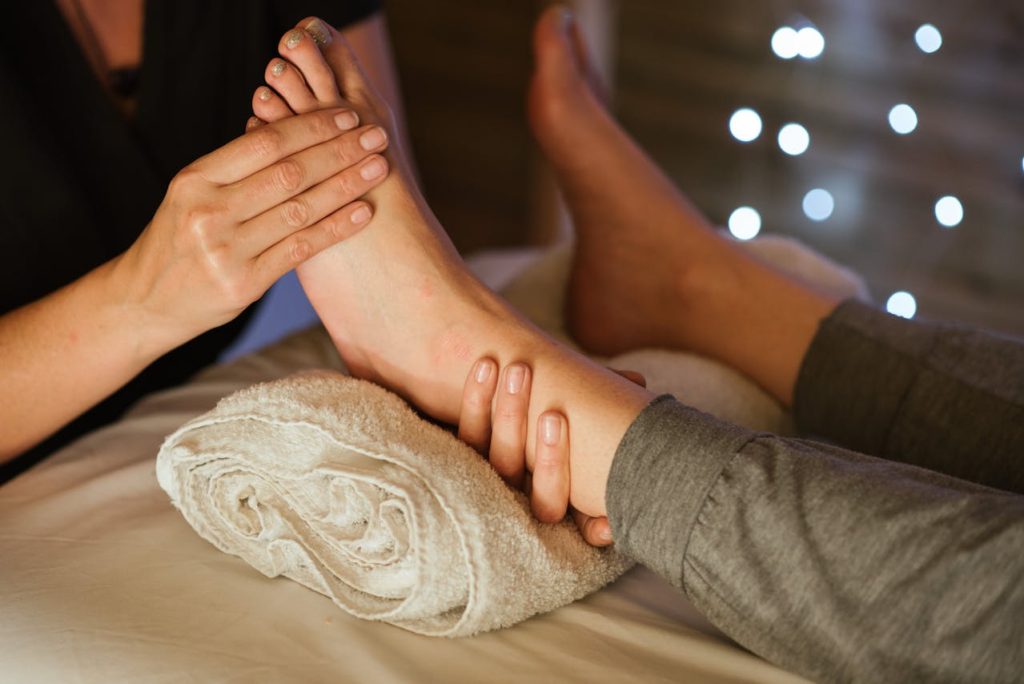Because the heel bone is the largest bone in your foot, having heel pain is often a painful experience that can interfere with your normal activities, and particularly exercise. Heel pain usually affects the underside or back of your heel. If you’ve overused or injured your heel, you may experience pain which can range from mild to completely disabling. Some common causes of heel pain include plantar fasciitis, sprains and strains, a fracture, and Achilles tendonitis, bursitis, and osteochondroses, reactive arthritis, and ankylosing spondylitis. The most common cause of heel pain is plantar fasciitis which occurs when too much pressure on your feet damages the plantar fascia ligament sending excruciating pain signals from the bottom of your feet up through your legs.
“Preventive measures or long-term treatment can include custom orthotic devices…”
How long does it take for heel pain to go away?
At first, foot pain is usually mild but can become severe and sometimes disabling. It usually disappears without treatment, but sometimes it can persist and become chronic. Pain typically starts gradually, with no injury to the affected area and is often triggered by wearing a flat shoe. The amount of heel pain relief will vary with each person from weeks to months depending on your activity level and commitment. No matter the kind of treatment you undergo for plantar fasciitis, the underlying causes may remain. Preventive measures or long-term treatment can include wearing supportive shoes, stretching and using custom orthotic devices which can alleviate much of the pain. It’s important to rest your heel until recovery; if home treatments don’t work, see a podiatrist pedorthist who can recommend custom shoe orthotics. In very rare cases when your doctor does recommend surgery, understand in choosing to do so it may take a long recovery time. Using a number of treatment approaches simultaneously, including home treatments, custom orthotics and medical treatments, can help to a faster recovery.
“Pain typically starts gradually, with no injury to the affected area and is often triggered by wearing a flat shoe.”
How do I stop heel pain?
Most people recover with conservative treatments within months which include non-steroidal anti-inflammatory drugs, corticosteroid injections, physical therapy, and custom orthotics. If nothing else works, you can stop heel pain with surgery; a surgeon may detach the plantar fascia from the heel bone which can affect the function of the foot. Only a small percentage of patients may require surgery. If after several months of nonsurgical treatment, you continue to have heel pain, surgery will be considered and your surgeon will discuss options and an approach that would be most beneficial for you. You can go through nonsurgical treatment at home. Doctors recommend the RICE method for treating pain: Rest, Ice, Compression, and Elevate. By keeping your weight off the bruised heel, holding ice and taping the heel up, and elevating it on a pillow can lead to faster healing. Other methods of treatment are using extracorporeal shock wave therapy to encourage and stimulate healing in the affected areas. Overall, there are some simple steps to soothe heel pain and knowing your options for preventing that pain from coming back is essential.
“Only a small percentage of patients may require surgery.”
How do you relieve heel pain?
There are many methods of relieving pain through medication such as Ibuprofen, Aspirin, and Naproxen to ease the discomfort. These over-the-counter nonsteroidal anti-inflammatory medications should provide some relief. You can also relieve pain by getting custom orthotics (like those from the The Shoe Doctor) that can provide shock-absorption and relaxation against the discomfort. Cutting down on extended physical activities and ensuring that you’re icing the inflamed areas are some great options for treatment at home. Options for preventing heel pain involve reducing stress on that part of the body – by wearing supportive and shock-absorbing shoes, custom orthotics, resting your feet, and maintaining healthy body weight, you can keep the pain at bay.
Need Help?
The Shoe Doctor has specialized in providing custom orthotics for 20 years. The right insole can greatly reduce foot, knee and hip pains. Russell at The Shoe Doctor will help educate and assist you in finding the perfect solution for your particular situation. We will create a 3D map of your feet and make a custom orthotics for your shoes. These orthotics along with our expert advice will get you back to being able to walk peacefully. Our sole (ha ha!) purpose is to reduce your pain and make you comfortable again. If you are in the San Francisco Bay Area (driving directions here), give The Shoe Doctor a call to get the best custom orthotics in the area! We are here to assist you, give us a call at (925) 820-0220 for your free consultation!
“Our sole (ha ha!) purpose is to reduce your pain and make you comfortable again. Call The Shoe Doctor for an appointment today!”
Sources:
- https://www.foothealthfacts.org/conditions/heel-pain-(plantar-fasciitis)
- https://www.mayoclinic.org/symptoms/heel-pain/basics/definition/sym-20050788
- https://www.healthline.com/health/bruised-heel
- https://www.healthline.com/health/heel-pain
- https://www.everydayhealth.com/foot-health/care-for-heel-pain.aspx
- https://www.medicalnewstoday.com/articles/181453.php


